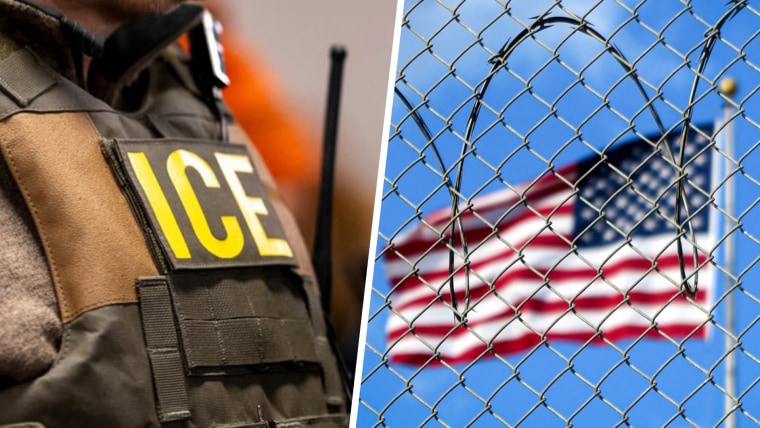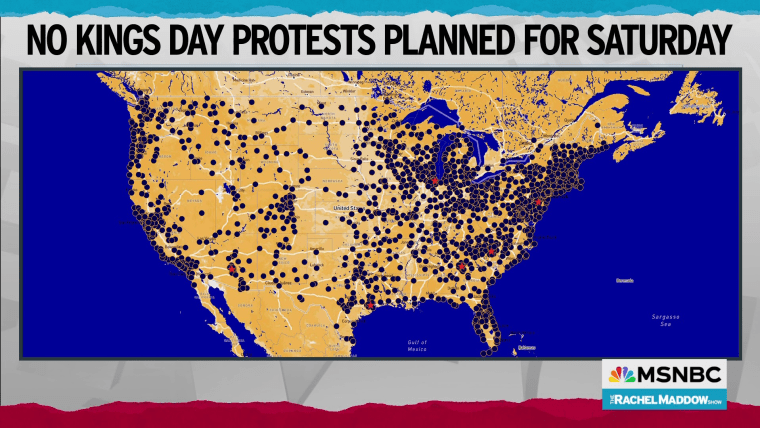President Donald Trump and his most loyal allies have seized on images of Mexican flags being waved at the protests in Los Angeles against his mass deportation regime. “Insurrectionists carrying foreign flags are attacking immigration enforcement officers,” Vice President JD Vance posted Saturday on X. “Foreign flags flying in American cities to defend the invasion and defy federal law,” White House deputy chief of staff Stephen Miller tweeted that very same day.
Displaying flags from Mexico, Central America or other Latin American countries is nothing new at these demonstrations. As Los Angeles Times columnist Gustavo Arellano said in a recent video, those of us who have covered immigration issues for years frequently run into this “undue obsession with a piece of cloth.” Once again, immigration enforcement is being reduced to a culture war spectacle, pitting Americans against Americans over who and what gets to define what it means to be American. This is not a new tactic for Trump and his ilk — but Los Angeles is not just another city facing this fight.
Trump and his allies want a debate over whether people have the right to wave any flag at all, not why they’re waving it in the first place.
“We have to resist this, because in Los Angeles, we clearly understand what’s happening,” high school history teacher and Unión del Barrio community organizer Ron Gochez told Democracy Now! over the weekend. “The Trump administration is trying to make an example of Los Angeles. Los Angeles is the heart of the Mexican and Central American community here in the United States. And so, they think that if they can break us, they can break anyone in the country.”
In a region that is nearly 50% Latino, Los Angeles has long been a stage for what happens when marginalized communities push back. That resistance has often come with a price, from the Zoot Suit Riots in 1943, when young Mexican American men were beaten and arrested by servicemen and police, to the 1970 Chicano Moratorium, when the Los Angeles Sheriff’s Department killed three individuals, including journalist Rubén Salazar, during a protest against the Vietnam War. In 1994, the city was the center of the fight against Proposition 187, California’s attempt to deny public services to undocumented immigrants. Those in power condemned each of those movements at the time, but all of them have since become part of a broader American story of civil rights.
The Trump administration and its supporters haven’t read that story though. “This is a calculated and strategic decision by the Trump administration to turn LA into a test case for quashing political dissent,” journalist Tina Vásquez wrote earlier this week. It is easier to attack a symbol like a flag, which is ironically woven into U.S. history through the land-grabbing legacy of the Mexican-American War, than to confront what it represents in the hands of someone born here, raised here and determined to stay.

Americans also forget how, during the time of the Mexican Revolution in the early 20th century, the United States intervened militarily multiple times, occupying border towns and launching cross-border raids. The line between what is “American” and what is “Mexican” has never been clear-cut, no matter how much political leaders insist it is.
Still, the images of the Mexican flag align with a narrative Trump and his allies have been promoting for years, a way to reduce a protest about policy and due process to a spectacle about patriotism and identity. Instead of discussing due process violations, courthouse arrests or policy abuses, they want to pivot the conversation to patriotism and symbols. They want a debate over whether people have the right to wave any flag at all, not why they’re waving it in the first place.
“These idiots waving Mexican flags during the LA riots just gave Donald Trump the greatest political gift,” Republican strategist Matt Wylie told Newsweek. “It will be ‘Exhibit A’ as proof of an invasion. Those images have done more in the last few days to strengthen his ability to crackdown on illegal immigration than weeks of messaging ever could.”
All this anti-immigrant strategy has accomplished is to mobilize states like California to produce new leaders and justice movements that place immigrants first.
But as Vásquez wrote, “like many audacious, power-hungry leaders before him, Trump has vastly underestimated his adversaries.” That’s what is missing from much of the current political spin. Yes, Trump and his allies are trying to paint Los Angeles as an anti-American symbol of insurrection, but the MAGA crowd overlooks that previous protests, such as the Prop 187 ones or the massive immigration rallies of 2006, were about the same issues we are all witnessing now. Angelenos have seen it all before: vilification, fearmongering and false claims about un-American activities. All this anti-immigrant strategy has accomplished is to mobilize states like California to produce new leaders and justice movements that place immigrants first.
A CBS News poll released just before the demonstrations found that Americans only support deportations if they believe ICE is targeting “dangerous criminals.” That support drops fast if they believe people are being denied hearings or due process. While 55% support the president’s deportation “goals,” that flips to 56% opposing his “approach” to deportations. And a YouGov survey taken amid the demonstrations finds just 39% approve of Trump’s handling of deportations, while 50% disapprove.
Trump’s bet on making foreign flags the story follows a predictable script. The difference is that those waving the flags know the ending. They have lived it before and they’re still here, protesting with pride in where they come from and ensuring that their voices will not be erased. They sense that they are on the right side of American history. And they understand that these protests are not about loyalty to another country, but about claiming space in this one.

